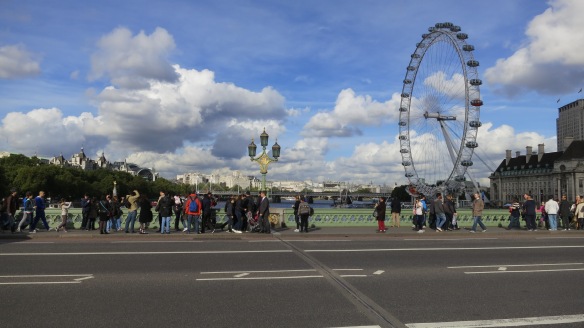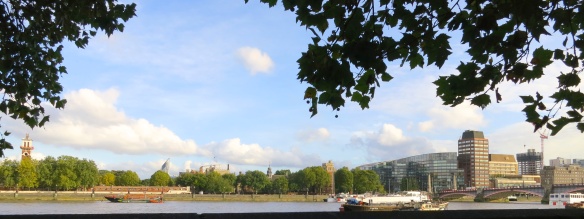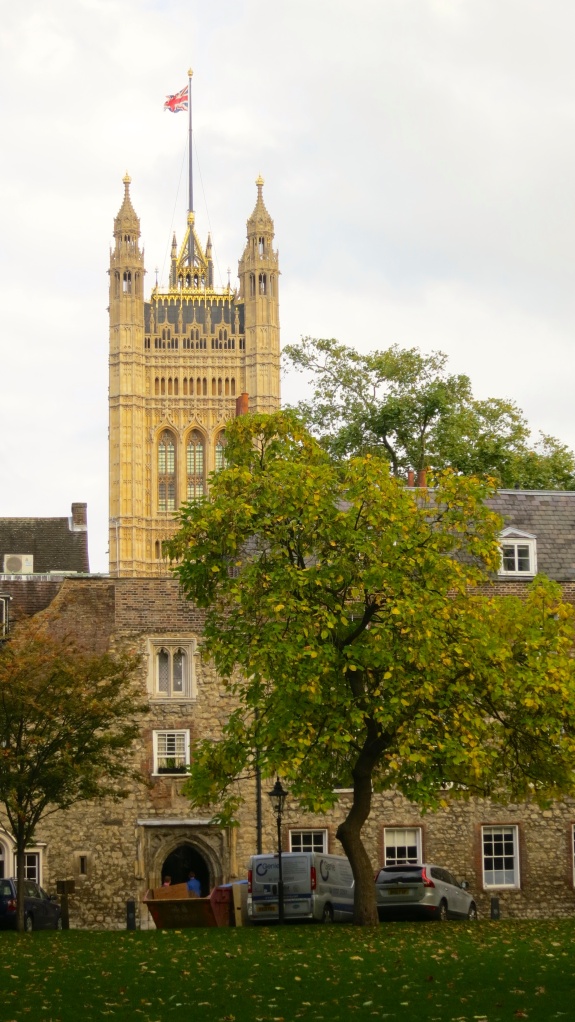Last night Jackie researched the history of Bisterne on the Internet. Emma historian, in her blog featured this year’s Scarecrow Festival, photographing the exhibits as I did. She had this to say about The Village Hall and The Old School House: ‘The Village Hall was built in 1840 to house the local school and is adjacent to a thatched building which was once the old schoolhouse. Following its closure in 1946, the two buildings were given to Bisterne and Crow to be used as a Village Hall.’ In his 1958 article ‘Journeying through Bisterne’, Roy Hodges adds: ‘a picturesque cottage, once the home of the village schoolmistress when the hall was a school’ as a description of the house we viewed yesterday.
This afternoon Jackie drove me to Southampton Parkway for a London trip to visit Carol at her flat in Rochester Row. If anything interesting happened on the journey I missed it because I slept most of the way.
On this beautiful balmy Autumn day tourists, as usual thronged Westminster Bridge. Some of them, perhaps, had indulged in leaving tokens of their love for each other in a less vandalising manner than is generally applied. 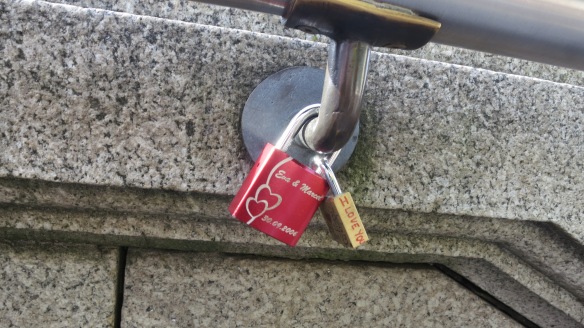 Locked in place on the supports for the handrails lining the steps leading up to the bridge were a row of tiny padlocks bearing the coupled lovers’ names. I thought of them as lovelocks.
Locked in place on the supports for the handrails lining the steps leading up to the bridge were a row of tiny padlocks bearing the coupled lovers’ names. I thought of them as lovelocks.  Normal examples adorned a seat in Westminster Tower Gardens, alongside the Houses of Parliament.
Normal examples adorned a seat in Westminster Tower Gardens, alongside the Houses of Parliament.  Lovers in Barbados, as I discovered in 2004, use a less permanent platform on which to inscribe their names. Thick succulent leaves sufficed for them.
Lovers in Barbados, as I discovered in 2004, use a less permanent platform on which to inscribe their names. Thick succulent leaves sufficed for them.
My reason for entering the gardens as a slight diversion from my route to my friend’s flat had been once more to admire the work of Auguste Rodin. That great French sculptor’s ‘Monument to The Burghers of Calais’ has always intrigued me, and sometime in the 1970s I had made a series of large black and white prints. Had I been able to find the negatives this evening I would have illustrated this post with one. So, why didn’t I use today’s photos? You may well ask. I didn’t take any. Why not? 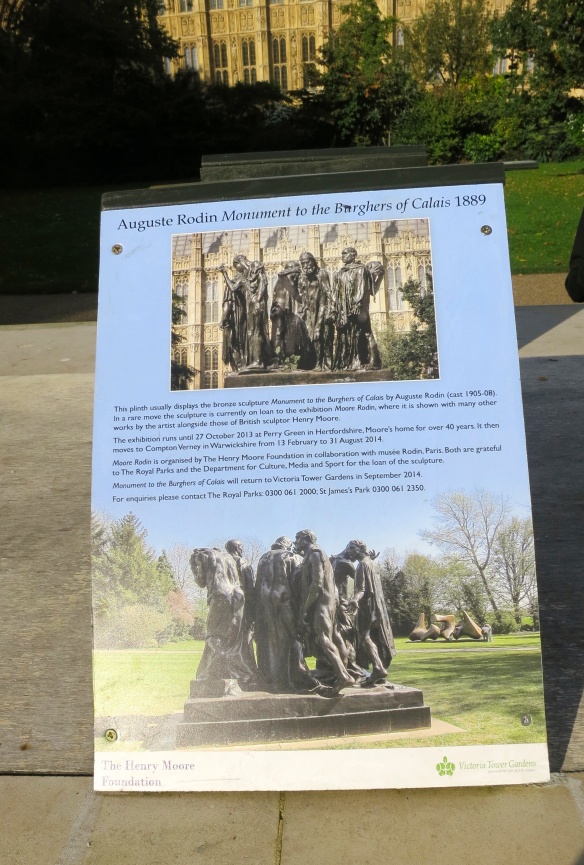 Because the work was away on loan. There is something elusive about Rodin for me. When Julia Graham, one of my Area Manager colleagues in Westminster Social Services, about the time I was taking the aforementioned photographs, had asked me to bring her a poster back from the Musee Rodin in Paris, that establishment had been closed on the occasion of my visit. I was able, on a subsequent trip, to rectify the situation, so maybe I’ll get to find my negatives.
Because the work was away on loan. There is something elusive about Rodin for me. When Julia Graham, one of my Area Manager colleagues in Westminster Social Services, about the time I was taking the aforementioned photographs, had asked me to bring her a poster back from the Musee Rodin in Paris, that establishment had been closed on the occasion of my visit. I was able, on a subsequent trip, to rectify the situation, so maybe I’ll get to find my negatives.
In order to purchase the lifting of the siege of Calais by England’s Edward III, six burghers were willing to sacrifice their lives. This is the theme of the dramatic sculptural group. They were saved by the intervention of the English Queen, Philippa of Hainault.  The crowns of England and France were pretty interchangeable in those days, as exemplified by Richard, Coeur de Lion, featured two days ago. Today, he still sits astride his horse, sword raised, about to send his motorised transport into battle from the Houses of Parliament car park.
The crowns of England and France were pretty interchangeable in those days, as exemplified by Richard, Coeur de Lion, featured two days ago. Today, he still sits astride his horse, sword raised, about to send his motorised transport into battle from the Houses of Parliament car park.
Lambeth Palace, which I would pass on the 507 bus back to Waterloo, stands on the opposite bank of the Thames, vying with the vast modern buildings alongside, the tallest of which blends with it rather well.
I walked through Dean’s Yard, where the ornamental trees were beginning to rival the splendour of the Parliamentary gilt in the background.
Jackie met me at Southampton after I made my usual journey back there, drove me home, and fed me with a superb sausage and bacon casserole followed by apple crumble, with which I finished the Kumala begun a few days ago.
